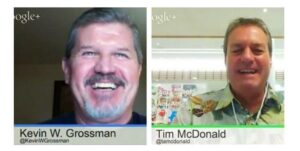
How to Humanize Your Employer Brand on Social Media
What is an Employer Brand? Employer branding is a fundamental part of every company’s identity. It’s not just about the products and services you offer.

What is an Employer Brand? Employer branding is a fundamental part of every company’s identity. It’s not just about the products and services you offer.

Companies have specific priorities to help them create traction and build better businesses. They make sure their finances are going well, remain competitive, and engage

On #WorkTrends this week we discussed the ways companies can assess their Workplace Intelligence level and craft an improvement strategy.

Join #WorkTrends this week to discuss the ways companies can assess their Workplace Intelligence level and craft an improvement strategy.
The TalentCulture #TChat Show is back live on Wednesday, January 28, 2015, from 7-8 pm ET (4-5 pm PT). The #TChat radio portion runs the first

Can you believe #TChat has been going strong for three years? Time flies on the stream! Let’s talk about the future of social learning and your thoughts on community
Social media is all the rage. But the power of social media is not in the tools. It’s in the relationships behind the tools. Here’s how employers can leverage social tools to cultivate talent communities…